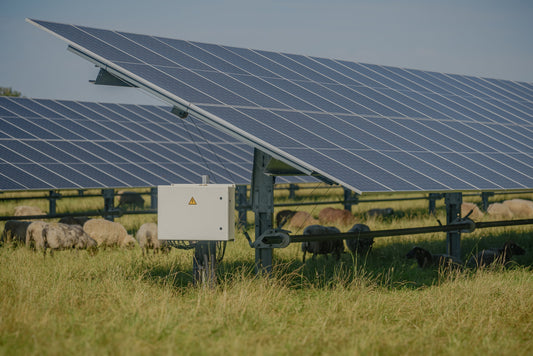As we move into 2025, New Zealand homeowners face a significant challenge: rising power prices (1) (2). With electricity costs expected to continue climbing, homeowners must consider cost-effective energy solutions like solar power or remain trapped in an upward price spiral (4) (6).
How Much Are Power Prices Expected to Rise?
Power prices in New Zealand are projected to increase by an average of $10 per month ($120 annually starting from April 1, 2025 (2) (4).
Why Are Power Prices Rising?
Several key factors are contributing to the current rise in power prices:
-
High Inflation: Inflation increases the cost of goods and services across the board, including the materials and labour needed for electricity generation and distribution
-
Interest Rate Increases: Higher interest rates make borrowing more expensive for power companies, raising the cost of infrastructure projects and maintenance (1).
-
Infrastructure Investments: Significant investments are being made to upgrade and expand the electricity grid to ensure reliability and meet future demand. These costs are often passed on to consumers (1)(2).
-
Electrification of New Zealand: Electricity demand is increasing as New Zealand moves towards greater electrification to meet climate goals. This puts additional pressure on the existing grid and drives up prices (2)(3).
-
Dry Winters: New Zealand relies heavily on hydroelectric power, which is vulnerable to dry winters. When water levels are low, the country must rely more on expensive thermal generation, driving up costs. (6)
-
Aging Network: Much of New Zealand's electricity infrastructure is aging and requires significant investment to maintain and upgrade. This adds to the overall cost of electricity. (6)

What Makes Up Your Power Bill?
Understanding your power bill can help you see where these increases come from. A typical power bill in New Zealand is made up of several components (5):
- Energy Charges (32%): This is the cost of generating the electricity you use, measured in kilowatt-hours (kWh).
- Daily Fixed Charges (10%): The cost of transporting electricity from the power stations to local distribution networks. (Transmission Charges), this is sometimes called a “Transpower” charge on your bill.
- Line Charges (27%): These charges cover delivering electricity from local substations to your home. This includes maintaining and upgrading the power lines and infrastructure that delivers electricity to your home.
- Retail Charges (13%): These are the services provided by the energy retailer, including customer service and administration costs.
- Taxes and Levies (18%): This includes GST (15%), Metering (2%), Market Governance (1%).
Why Solar Power is the Smart Choice for Homeowners?
Given the rising costs, investing in solar power is a smart move for homeowners. When you install a grid-tied solar and battery system, your energy charges can decrease in two main ways:
- Self-Consumption: The electricity you generate and use directly in your home. Using the electricity your solar panels generates reduces the amount you need to buy from the grid. For example, if your system generates 10 kWh per day and you use 7 kWh of it, you save 7 kWh * 35.36 cents = $2.48 per day or approximately $905 per year.
- Exporting Excess Energy: The electricity you generate but do not use is then exported to the grid. Assuming an average buyback rate of 12 cents per kWh, if you export 3 kWh daily, you earn 3 kWh * 12 cents = 36 cents per day, or approximately $131 per year.
Combined Savings
Combining self-consumption and exporting excess energy, your total savings would be the sum of the savings from self-consumption and the earnings from exporting excess energy. For instance, if you save $905 per year from self-consumption and earn $131 per year from exporting excess energy, your total savings would be approximately $1,036 annually, making solar installation services a smart solution for energy independence and cost savings.

Additional Benefits
· Energy Independence: By generating and storing your own electricity, you gain greater control over your energy supply and reduce your dependence on the grid.
· Resilience: Battery storage provides backup power during grid outages, ensuring you have a reliable power supply even during emergencies.
· Increased home value: Installing solar panels can significantly increase a property's resale value. Studies show that homes with solar installations sell for more than those without.
By investing in residential solar systems and battery storage, homeowners can achieve significant financial benefits, greater energy independence, and enhanced resilience against rising power prices and grid instability.
Of course, an Off-Grid System can be installed to be genuinely energy-independent, eliminating your power bill entirely.
Partnering with Experts
Choosing the right partner for your solar journey is crucial. AA Solar offers comprehensive solar installation services for grid-tied, hybrid, and off-grid solutions. Their experienced solar engineers ensure each system is customised to meet the homeowner's unique needs.
As power prices in New Zealand continue to rise, homeowners must look towards cost-effective solutions. Solar power provides significant cost savings and enhances energy independence and home value. By partnering with experts in solar installation services, homeowners can navigate the challenges of the energy market and secure a brighter, more affordable future. Contact us today!
(2) Average household to pay $10 more a month for new power lines charges | RNZ News
(3) How are power prices set – and why are they going up?
(4) Consumer NZ Warns Of Rising Electricity Costs After Commerce Commission Decision | Scoop News








